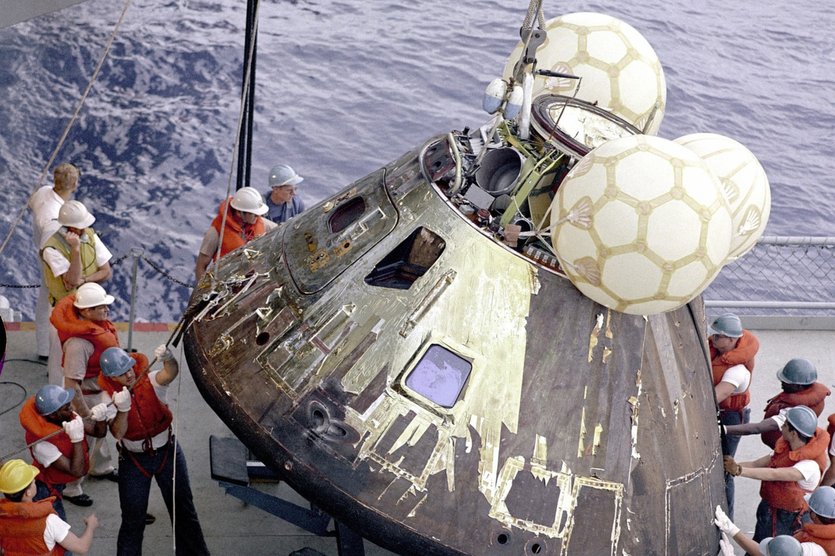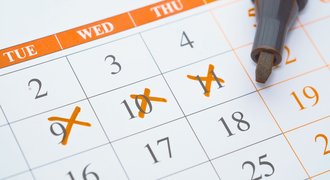In the spring of 1970, America was in the thick of the Space Race. The success of Apollo 11 had captured global imagination just nine months earlier, with humanity's first steps on the Moon.
Apollo 12 had further solidified American leadership in space, demonstrating pinpoint lunar landing capabilities.
Now, Apollo 13 was set to become the third crewed mission to land on the Moon, carrying the hopes and dreams of a nation. Commander Jim Lovell, a seasoned veteran who had already flown on Gemini 7, Gemini 12, and Apollo 8 (the first mission to orbit the Moon), Lunar Module Pilot Fred Haise, and Command Module Pilot Jack Swigert were calm and confident.
Their Saturn V rocket - a towering symbol of American ingenuity - roared off the pad at Kennedy Space Center on April 11, a spectacular sight against the Florida sky. The initial hours of the mission were uneventful, a testament to years of meticulous planning and countless simulations.
But two days into the mission, everything changed.
Team Support in the Face of Crisis
A Bang in the Dark: The Unthinkable Occurs
At exactly 55 hours, 55 minutes into the flight, just over 320,000 kilometers from Earth, Jack Swigert radioed Mission Control with a phrase that would become iconic: “Houston, we’ve had a problem.”
What had happened was terrifying and almost unimaginable.
An oxygen tank in the Service Module - the part of the spacecraft providing propulsion, electrical power, and life support for the Command Module - had exploded.
The blast was powerful enough to tear away a large panel on the side of the Service Module and damage the second oxygen tank. This wasn't a minor malfunction; it was a catastrophic failure, ripping away vital components and crippling the spacecraft.
Almost instantly, electrical systems failed. Oxygen stores plummeted. The carefully orchestrated scientific exploration of the Moon transformed into a desperate, life-or-death emergency in the cold, unforgiving void of space. The crew saw debris drifting away, illuminated by the distant sun, a chilling visual confirmation of their dire predicament.
What followed wasn’t just a feat of engineering or a dramatic rescue operation. It was a deeply human story – a testament to people coming together across time zones, disciplines, and immense stress thresholds to achieve something that none of them could have possibly done alone.
It underscored a profound truth: when the odds are overwhelming, team support and human collaboration become our most powerful tools.
When the Plan Falls Apart, People Step In: The Lunar Module Becomes a Lifeboat
The explosion meant the Command Module, Odyssey, was effectively a dead ship. It could no longer support the crew for the return to Earth. With oxygen leaking rapidly and power dwindling, a stark reality set in: the astronauts were forced to power down Odyssey to conserve its remaining battery life for re-entry and make a desperate move into the Lunar Module, Aquarius.
This wasn't just a simple change of cabins. Aquarius was a tiny lander, originally designed for just two men for two days, meant to ferry them from lunar orbit to the Moon's surface and back. Now, it had to house three astronauts for over four days – a challenge that stretched its design capabilities far beyond their limits.
The immediate concerns were overwhelming.
Oxygen wasn’t the only issue. Power, critical for everything from communications to temperature control, was critically low. Water, essential for cooling and drinking, was scarce. Even more alarmingly, carbon dioxide levels began to rise dangerously as the Lunar Module's scrubbers, designed for two people, struggled to cope with three. Navigation systems were offline, leaving them effectively blind in the vastness of space.
To make matters worse, Apollo 13 was now on a "free-return trajectory" around the Moon – not into orbit, but a slingshot maneuver to use the Moon’s gravity to propel them back towards Earth.
This path offered a route home, but there would be absolutely no room for error. Every maneuver, every calculation, had to be perfect. The stakes were literally life and death.
A Global Team Activates: "Let's Work the Problem!"
Back on Earth, in Mission Control in Houston, the mood was grim but resolute. Gene Kranz, one of the iconic flight directors, famously told his team:
Let’s work the problem, people. Let’s not make things worse by guessing.
From that moment, a massive, coordinated effort sprang into action. Engineers, scientists, flight planners, technicians, mathematicians, and medical experts from across NASA and its contractors poured every ounce of their expertise into finding solutions.
Every single problem, no matter how small it seemed, was assigned to a dedicated group.
One of the most famous examples of their ingenuity was the carbon dioxide scrubber problem. The square filters from the Command Module didn't fit the round openings of the Lunar Module's life support system. The "smartest guys in the room" on the ground had to figure out how to adapt square pegs into round holes using only materials available on board Apollo 13: duct tape, plastic bags, suit hoses, and checklists.
This ingenious, improvised solution, dubbed the "mailbox," had to be communicated over voice loops to a crew stranded hundreds of thousands of kilometers from Earth, who then had to assemble it in cramped, freezing conditions.
As the days passed, the teamwork intensified, becoming a relentless 24/7 operation.
Simulations were run nonstop in Houston, improvising procedures never tested before. Guidance teams worked tirelessly to figure out how to use the Sun’s angle for manual navigation, essentially teaching the astronauts to pilot a crippled spacecraft by looking out the window. Power systems experts calculated the microamp to conserve the last few bits of battery charge needed to bring Odyssey back online for its fiery re-entry.
Everyone had a crucial role. And they were all counting on each other, a sprawling network of brilliant minds united by a singular, desperate goal: bringing three men home.
The Crew Holds the Line: Resilience and Team Support Under Extreme Pressure
Inside the cramped, cold, and increasingly uncomfortable Lunar Module, Lovell, Swigert, and Haise faced unimaginable freezing temperatures (dipping close to freezing point), severe dehydration, and profound uncertainty.
Yet, through it all, they exhibited an extraordinary level of composure and resilience.
Panic was not an option.
They meticulously rationed water to just 200ml a day, battling extreme thirst and the debilitating effects of dehydration. They used socks as makeshift hand warmers to combat the numbing cold. And they followed every instruction from Earth with painstaking care and precision, even as their own bodies began to betray them.
Fred Haise developed a severe urinary tract infection from dehydration, and Jack Swigert fought off isolation-induced insomnia and the sheer mental strain of their predicament.
They weren’t just passive passengers being saved. They were critical, active partners in their own survival. Their ability to execute complex procedures, maintain focus, and endure extreme physical discomfort was as vital as the genius on the ground.
That’s the true essence of group motivation: you don't just help each other - you trust each other implicitly to rise to the moment, to perform under immense pressure, and to do whatever it takes for the collective good. Their courage was a mirror to the ingenuity of the ground crew.
Four Days Later, A Splashdown: Against All Odds

On April 17, 1970, after an agonizing journey that felt like an eternity, the world watched with bated breath.
Odyssey re-entered Earth's atmosphere after an uncertain and terrifying blackout period, during which communications are lost due to superheated plasma surrounding the capsule.
Moments later, three parachutes blossomed gracefully over the Pacific Ocean. Apollo 13 had made it back against all odds. Naval recovery forces quickly located the capsule and brought the weary but alive astronauts to safety.
The mission was famously dubbed a “successful failure”. No one walked on the Moon, the original objective unmet.
But everyone involved, and indeed the entire world, walked away with something far more valuable than a footprint on lunar dust: undeniable proof that team support, mutual respect, unwavering commitment, and group resilience can overcome almost anything.
It became a powerful case study in crisis management and the invincible human spirit.
What Does Apollo 13 Teach Us Today? The Power of "We"
Years later, Jim Lovell, the mission’s commander, would sum up what truly made the difference – and it wasn’t just complex calculations or advanced equipment:
Teamwork was necessary. Good leadership, initiative, to think outside of the box. When things go wrong, how do we repair them?
That question wasn’t theoretical for the Apollo 13 crew and ground control. It was the stark reality they faced hour by hour, minute by minute.
And the answer - every single time - came from people working in sync, across disciplines, united by a shared and urgent purpose. It was thousands of individual efforts uniting into one extraordinary, collective triumph.
Not all emergencies happen in the vacuum of space, demanding such dramatic heroics.
Sometimes, they happen in your personal life - a career setback, a health challenge, a broken relationship. Sometimes, they occur in your job, on a difficult project, or within your own head, as you battle self-doubt or procrastination.
And when they do, you often don’t need a multi-million-dollar rescue rocket.
You need a village. You need a few trusted people who will answer your call when your own oxygen tank feels empty.
You need a supportive group that holds you accountable to your goals even when you desperately want to quit. You need a mentor who helps you reroute when your first plan explodes mid-flight and leaves you adrift.
We often think of motivation as something intensely personal – an internal flame we must constantly stoke.
But the Apollo 13 story reminds us: motivation is profoundly contagious. It spreads when people trust each other implicitly, when no one is left to figure things out alone in isolation, and when everyone's individual success is inextricably linked to the group's collective effort.
It’s about building a shared mission, even if that mission is simply getting through the week.
🧭 Join Your Own Ground Control
At Goal Watch, we deeply believe in the power of connection. We're dedicated to building small, intentional communities around big dreams and challenging goals.
Whether it’s a career shift, launching a side project, pursuing a long-held passion, or seeking a second chance after a setback - you shouldn’t have to figure it out alone. Just like the team that brought Apollo 13 home, we thrive when we have a "ground control" in our corner.
Imagine:
🕊Joining a group of thoughtful, ambitious people who genuinely show up for each other, offering encouragement and practical advice.
🚀 Having a safe space to share your own “Apollo 13 moment,” whether it’s a small hiccup or a major crisis, and getting the support you need to navigate it.
🌍 Being part of a team that lifts, listens, and leads with care, helping you recalibrate your trajectory and find your way back to your goals.
Your village is waiting. Don't go it alone.





